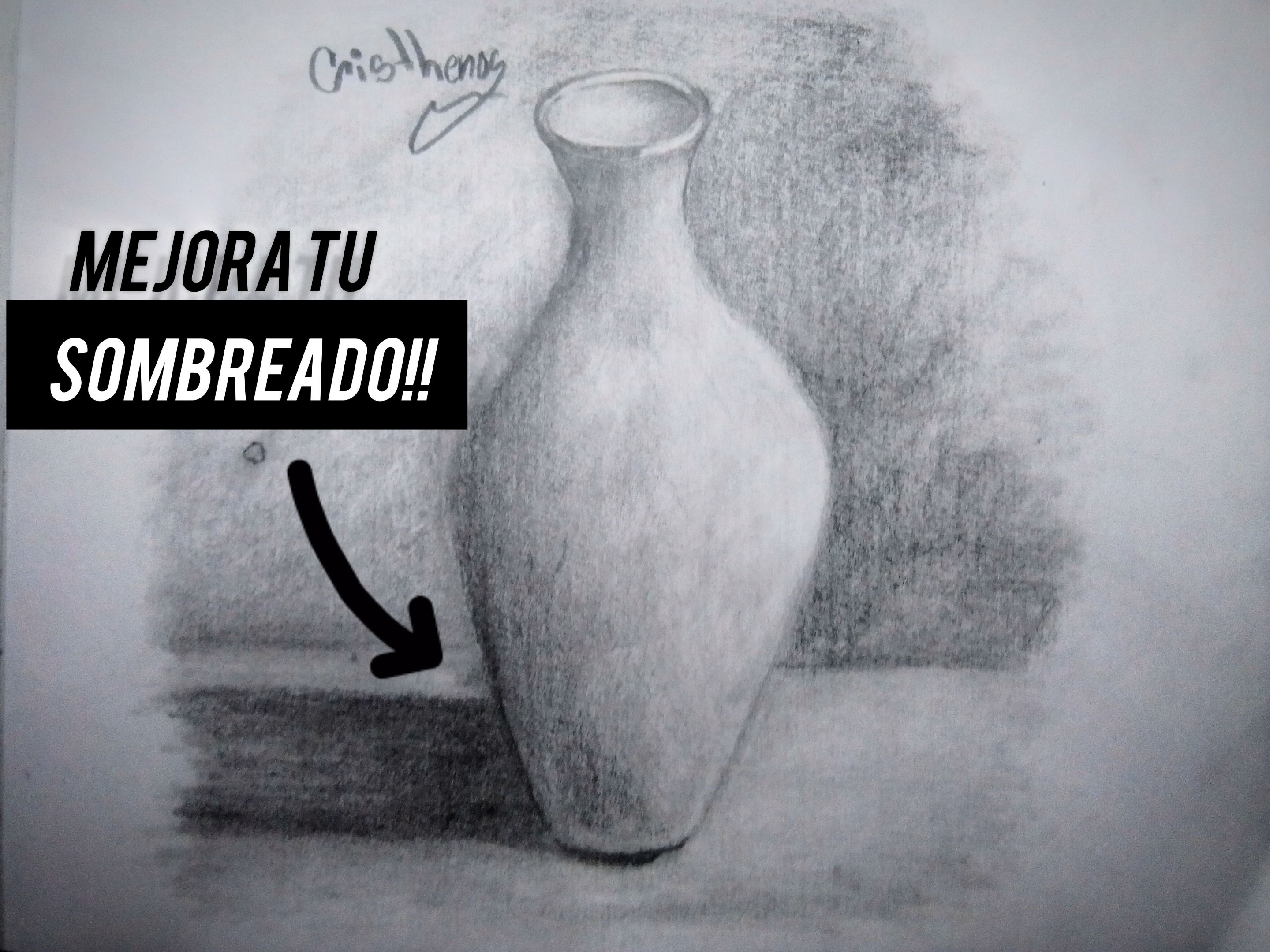
Hola, comunidad y sobre todo artistas de Hivearte, soy yo nuevamente, Cristhenos; espero todos se encuentren muy bien el día de hoy. En esta oportunidad les presento algunos ejercicios que pueden practicar para mejorar el sombreado, ya que en mi anterior post abarcamos todo lo que debería de saber un principiante en la parte teórica sobre la luz y la sombra y qué mejor manera de reforzar esa teoría que con la práctica. De todas maneras, si no tuviste la oportunidad de leer mi post anterior, estaré dando una que otra información relacionada al tema a abarcar. No los entretengo más. Antes de empezar, esto es algo que deberías saber.
Hello, community and above all Hivearte artists, it's me again, Cristhenos; I hope you all are doing well today. In this opportunity I present you some exercises that you can practice to improve shading, since in my previous post we covered everything a beginner should know in the theoretical part about light and shadow and what better way to reinforce that theory than with practice. Anyway, if you didn't have the chance to read my previous post, I will be giving some information related to the subject to cover. I won't keep you any longer. Before I start, here's something you should know.
El sombreado es un concepto artístico básico que consiste en otorgar zonas de luz y oscuridad en un dibujo. Esta técnica se relaciona directamente con el dibujo realista y es la base para su aprendizaje. La mayoría de nosotros, como artistas, solo nos enfocamos en un sombreado lineal, el cual ya hablamos en el post anterior, donde solamente hacemos un degradado de negro a blanco o viceversa sin tener en cuenta los valores tonales donde un tono, por más que parezca negro, no lo es, y esto lo podemos explicar en el siguiente cuadro.
Shading is a basic artistic concept that consists of giving areas of light and darkness in a drawing. This technique is directly related to realistic drawing and is the basis for learning it. Most of us, as artists, only focus on a linear shading, which we already talked about in the previous post, where we only make a gradient from black to white or vice versa without taking into account the tonal values where a tone, even if it looks black, it is not, and this we can explain in the following chart.
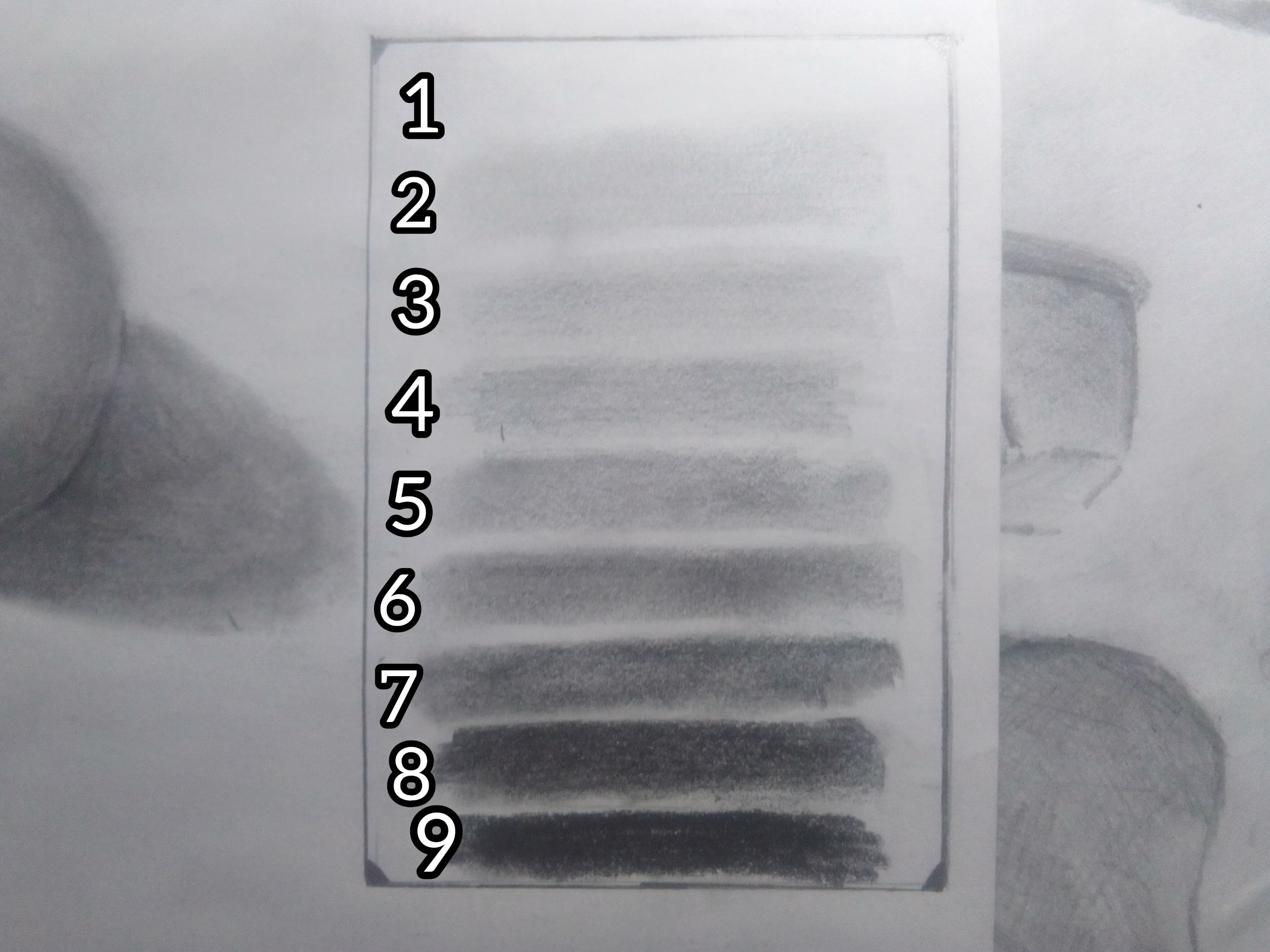
Donde 1 es blanco.
2 luz alta 3 luz 4 luz baja 5 tono intermedio 6 sombra alta 7 sombras 8 sombra baja 9 negro
Where 1 is white. 2 high light 3 light 4 low light 5 intermediate shade 6 high shade 7 shadow 8 low shadow 9 black
Los valores son esas tonalidades de gris que existen entre el blanco y el negro o bien dentro de la luz y la sombra. Todos los colores tienen tonalidades comparables a las de los grises que salen de la mezcla blanco-negro, a los cuales se les llama valores para de esta manera poder identificarlos de modo gradual. Los valores son representados en una escala del 1 al 9 y es preciso saber que los valores son los tonos intermedios entre los extremos de la escala, que son el blanco y el negro. Ahora sí, pasemos a los ejercicios.
Values are those shades of gray that exist between black and white or between light and shadow. All colors have shades comparable to the grays that come out of the black-white mixture, which are called values in order to be able to identify them gradually. The values are represented on a scale from 1 to 9 and it is necessary to know that the values are the intermediate tones between the extremes of the scale, which are white and black. Now, let's move on to the exercises
Una muy buena forma de aprender a sombrear es tener en cuenta los valores de cada lápiz y si cada tipo de lápiz puede tener unos valores distintos que otros, y esto lo podemos comprobar en la siguiente foto. Donde podemos apreciar que cada tipo de lápiz tiene valores independientes, pero todos siguen la misma regla: que mientras más presión, más oscuridad, y a menos presión, menos oscuridad. Y esto es bueno tenerlo en cuenta, ya que cuando se trabaja con muchos lápices, es recomendable saber qué tonos debemos elegir y cuáles no son los indicados.
A very good way to learn how to shade is to take into account the values of each pencil and if each type of pencil can have different values than others, and this can be seen in the following picture. Where we can see that each type of pencil has independent values, but they all follow the same rule: the more pressure, the more darkness, and the less pressure, the less darkness. And this is good to keep in mind, because when working with many pencils, it is advisable to know which tones to choose and which are not the right ones.
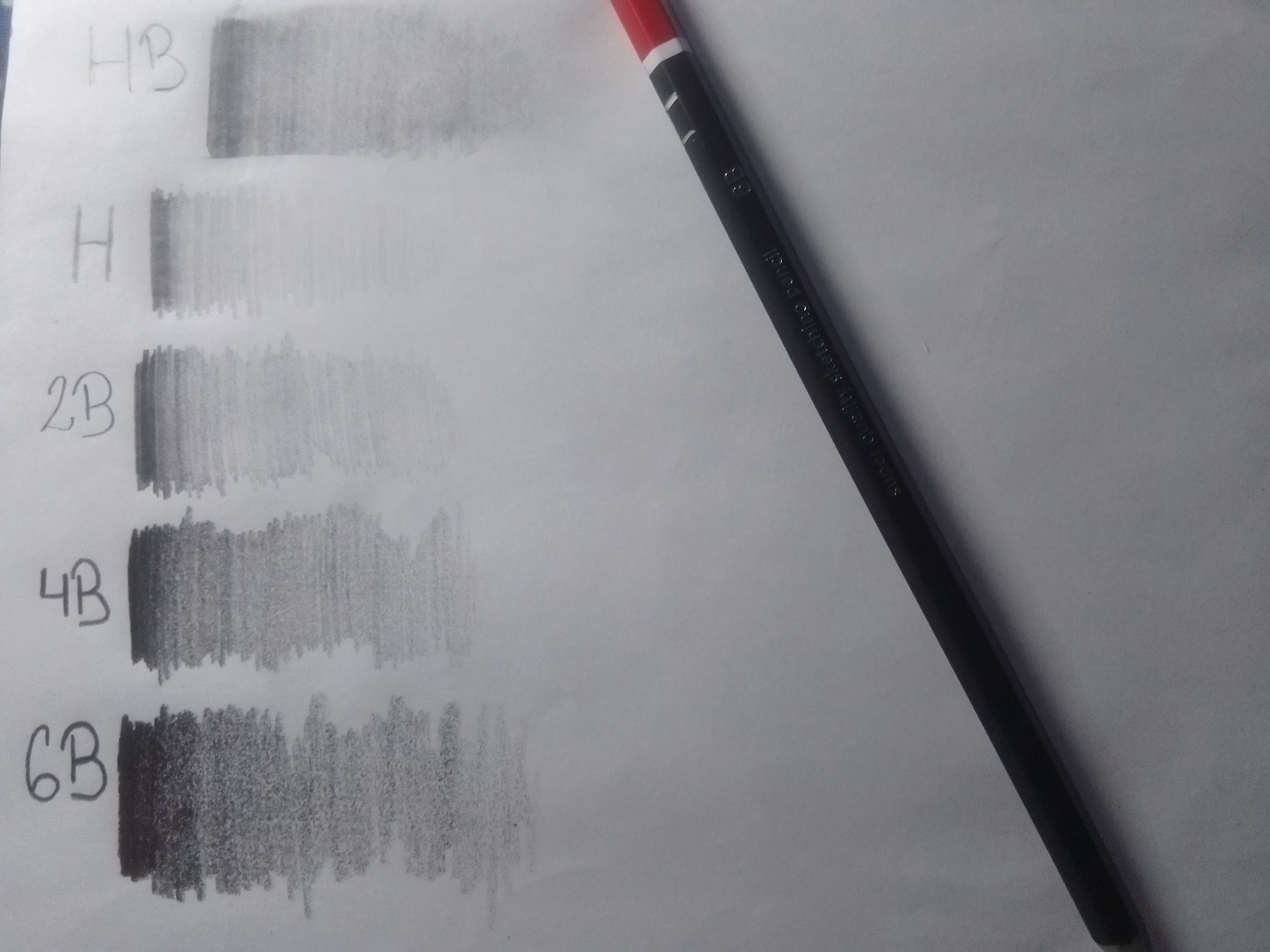
Uno de los ejercicios que me ha resultado bastante es el de dibujar figuras geométricas; son bastante sencillas y perfectas para trabajar con sombras. Aquí algunos ejemplos.
One of the exercises that I have found very useful is to draw geometric figures; they are quite simple and perfect to work with shadows. Here are some examples.
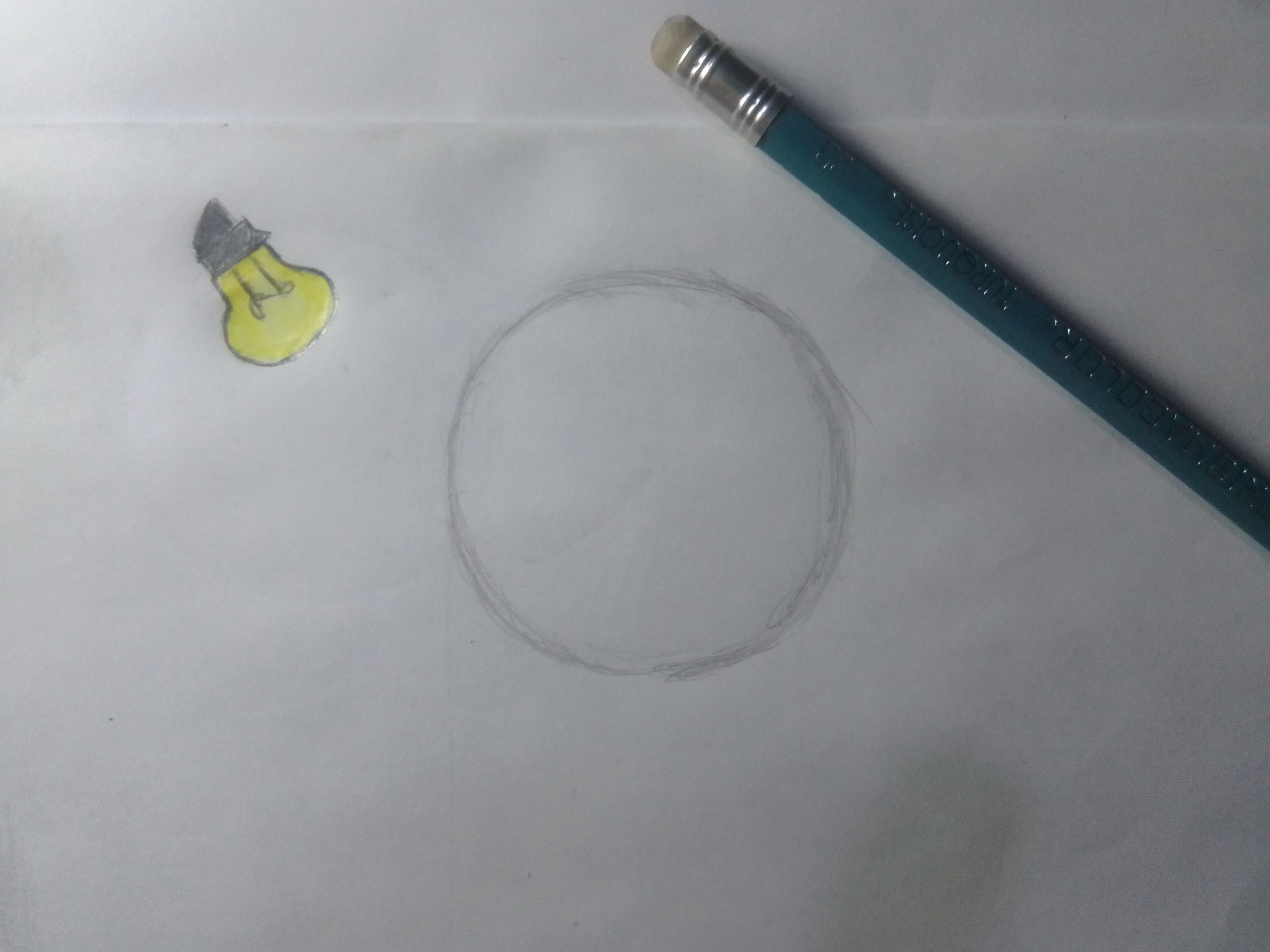
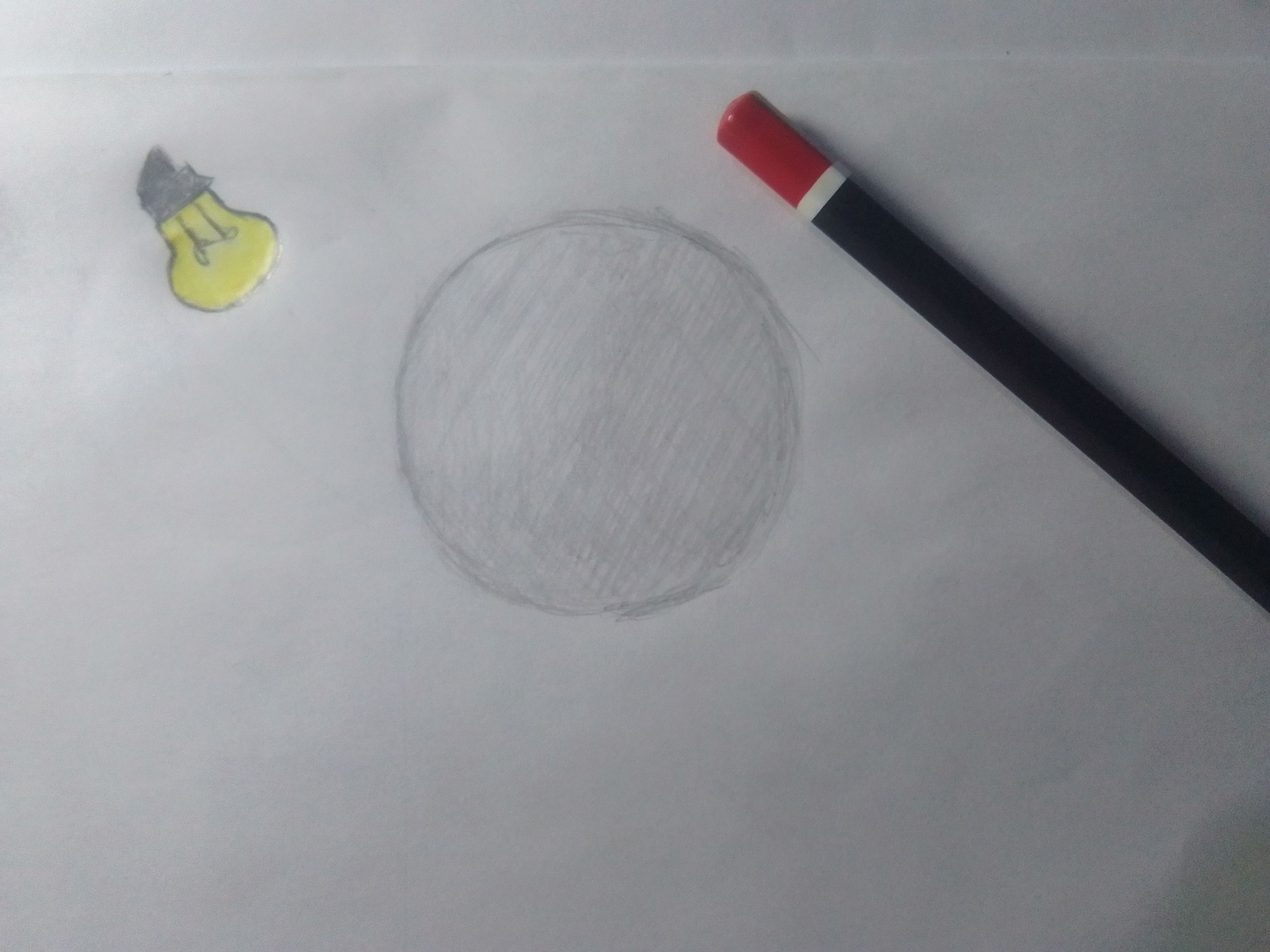

Cuando trabajo con una fuente de luz, me gusta imaginar esa luz como un cono; así sé que cuando impacte en el círculo, esta será más fuerte en el centro y, conforme esta se vaya alejando, se convertirá en sombras y de esta manera puedo crear una imagen mental de cómo quedaría la sombra. Para sombrear la esfera, primero creo una capa de gris con el lápiz H para después pasar al 2B, donde remarcaremos con fuerza en las partes donde no hay tanta luz y, en este caso, sería al extremo contrario donde la luz no impacta; y para suavizar los trazos podemos utilizar un esfumino. También ayuda a mezclar las capas para dar ese toque de realismo.
When I work with a light source, I like to imagine that light as a cone; this way I know that when it hits the circle, it will be stronger in the center and, as it moves away, it will turn into shadows, and this way I can create a mental image of how the shadow would look like. To shade the sphere, I first create a layer of gray with the H pencil and then move on to 2B, where we will highlight strongly in the parts where there is not so much light, and, in this case, it would be at the opposite end where the light does not impact; and to soften the strokes, we can use a sphumino. It also helps to blend the layers to give that touch of realism.


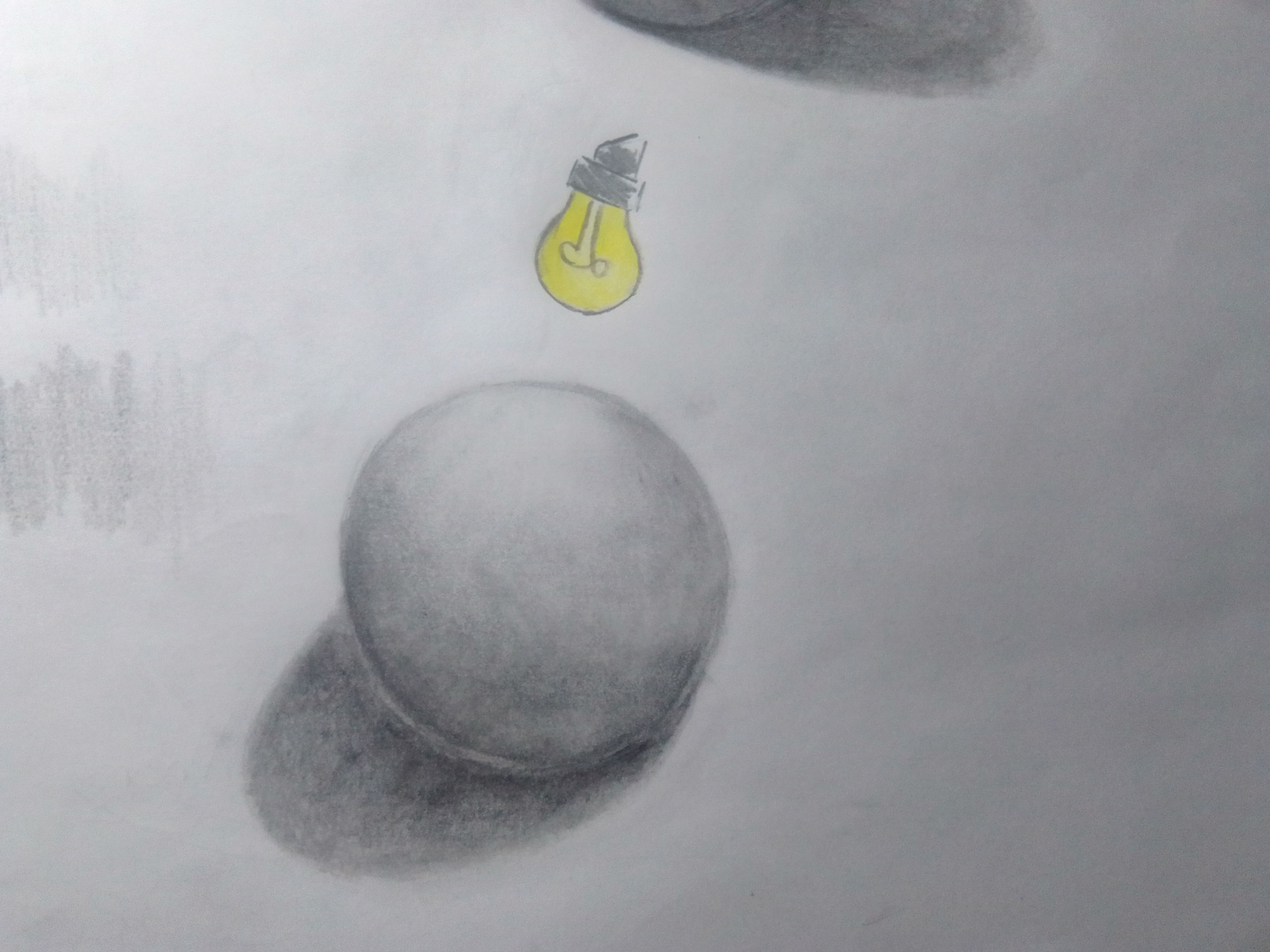 Para finalizar, vamos a poner todo esto en práctica y qué mejor que el clásico de dibujar objetos, que en este caso es un jarrón. El procedimiento es el mismo que todo lo dicho anteriormente para no repetir todo nuevamente y el resultado sería el siguiente.
Para finalizar, vamos a poner todo esto en práctica y qué mejor que el clásico de dibujar objetos, que en este caso es un jarrón. El procedimiento es el mismo que todo lo dicho anteriormente para no repetir todo nuevamente y el resultado sería el siguiente.
Y de esta manera podemos ir rotando la luz para lograr diferentes ángulos donde lo único que cambia es la dirección de la luz, pero el procedimiento sigue siendo prácticamente el mismo y de esta manera podemos ir desarrollando un plano mental de cómo funciona la luz y, aparte, también mejoramos nuestro sombreado.
And in this way we can rotate the light to achieve different angles where the only thing that changes is the direction of the light, but the procedure remains practically the same and in this way we can develop a mental plane of how the light works and, in addition, we also improve our shading.
Si sienten que los círculos son demasiado sencillos, pueden ir cambiando las figuras; en internet hay mucha variedad de contenido relacionado a este tipo de sombreado de figuras, así podemos tener una referencia o también podemos optar por crear figuras de papel y iluminarlas por nuestra cuenta, que también es una excelente forma.
If you feel that the circles are too simple, you can change the figures; on the internet there is a lot of content related to this type of figure shading, so we can have a reference or we can also choose to create paper figures and illuminate them on our own, which is also an excellent way.
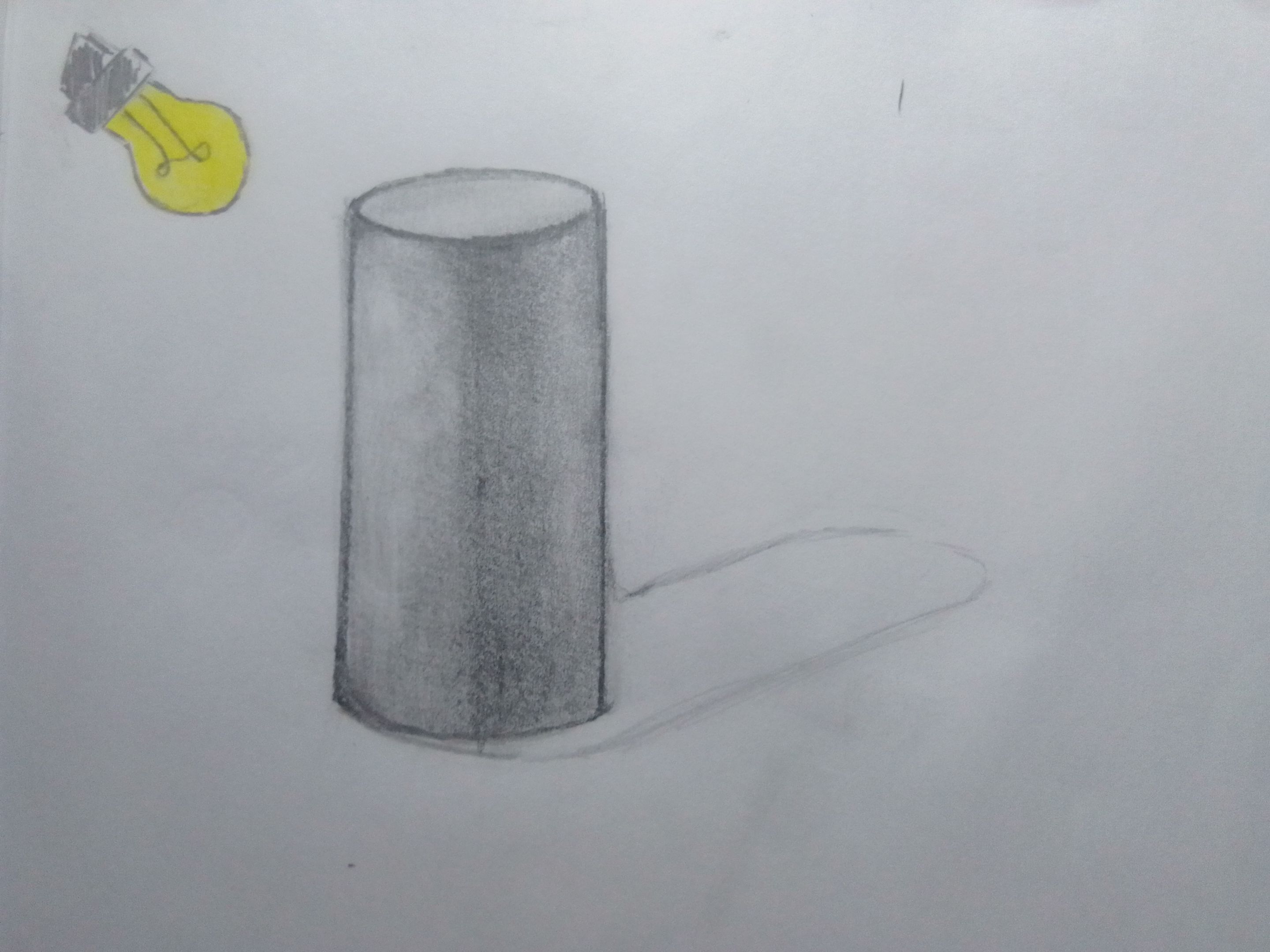
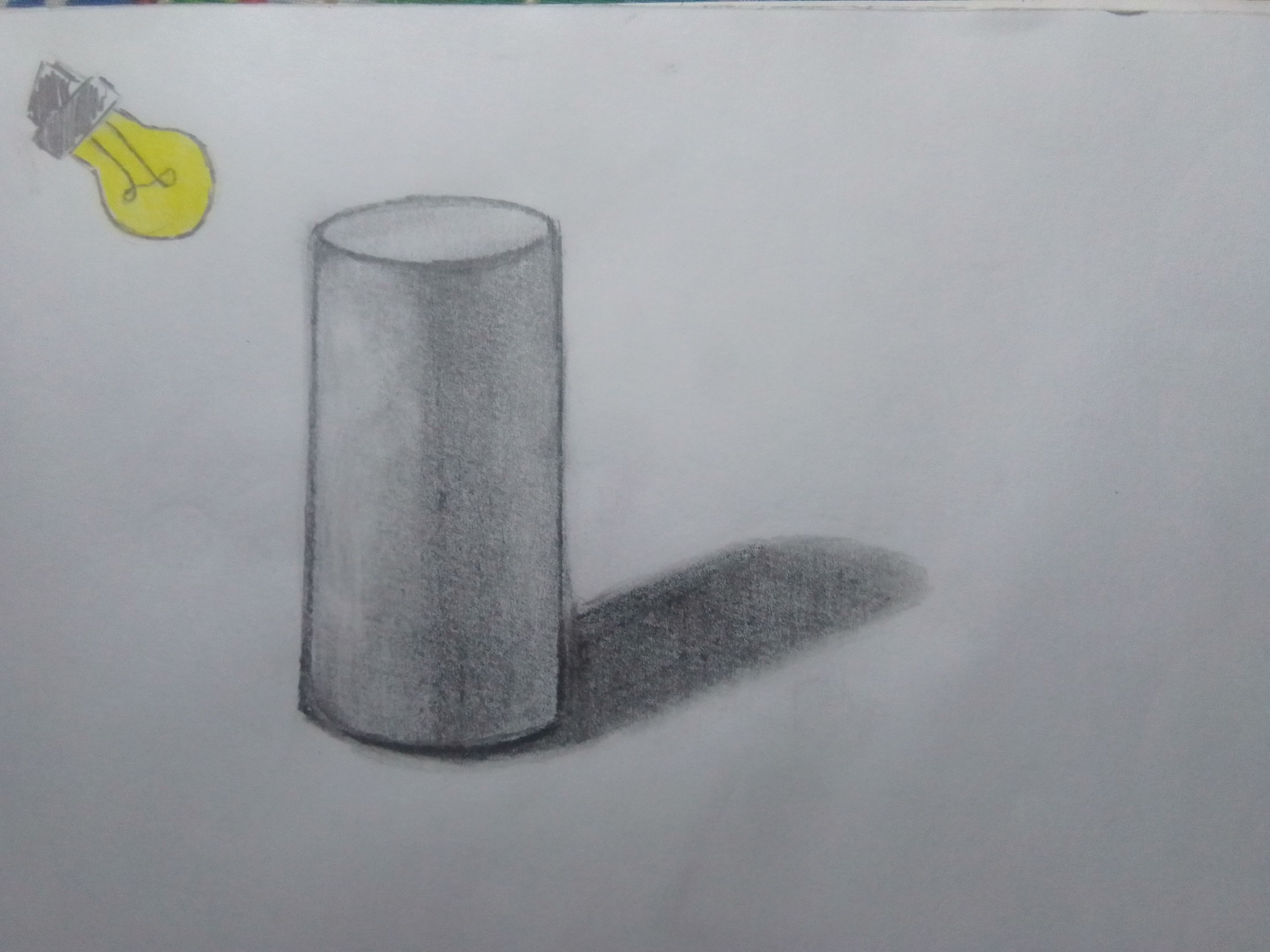
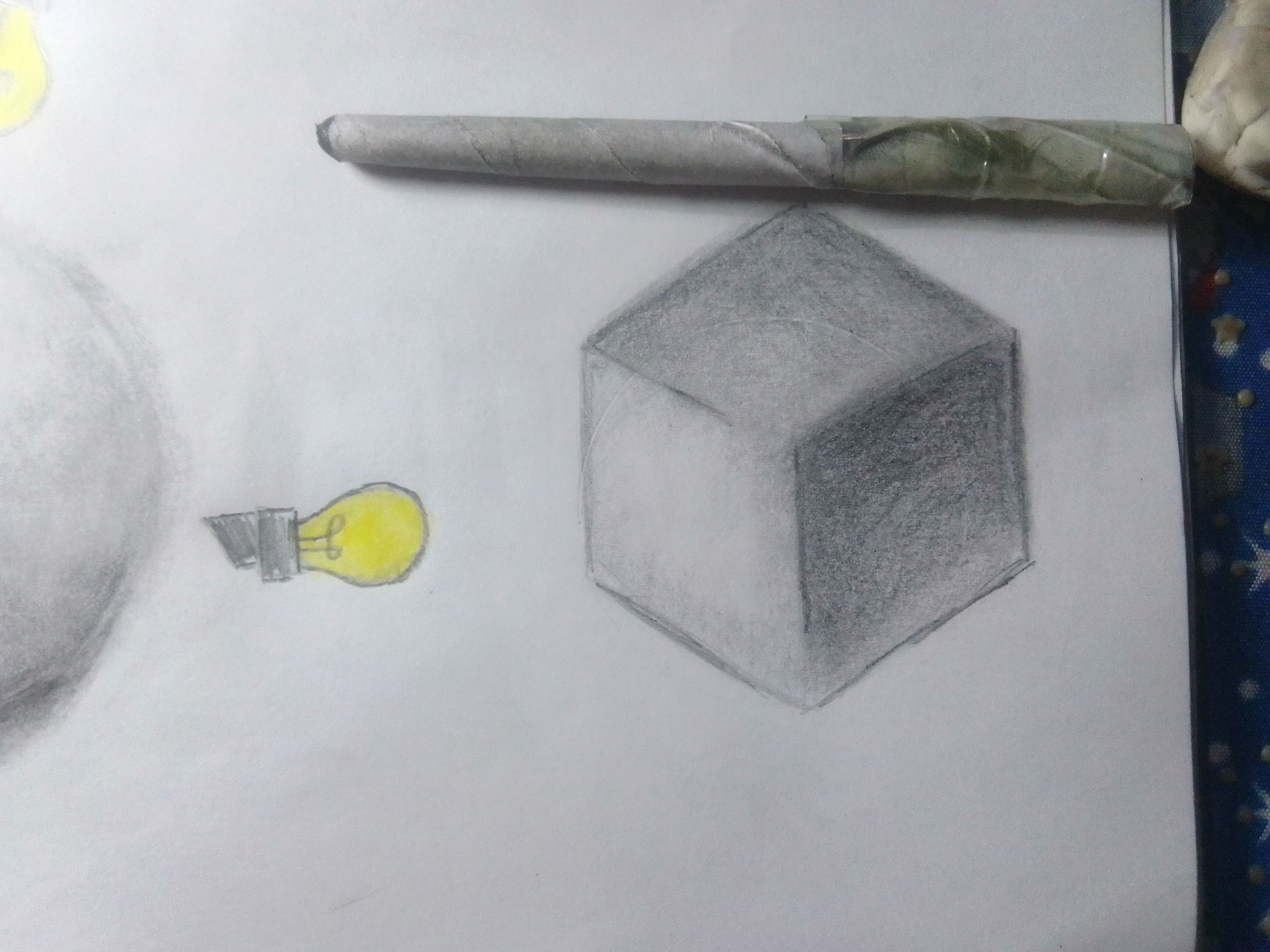
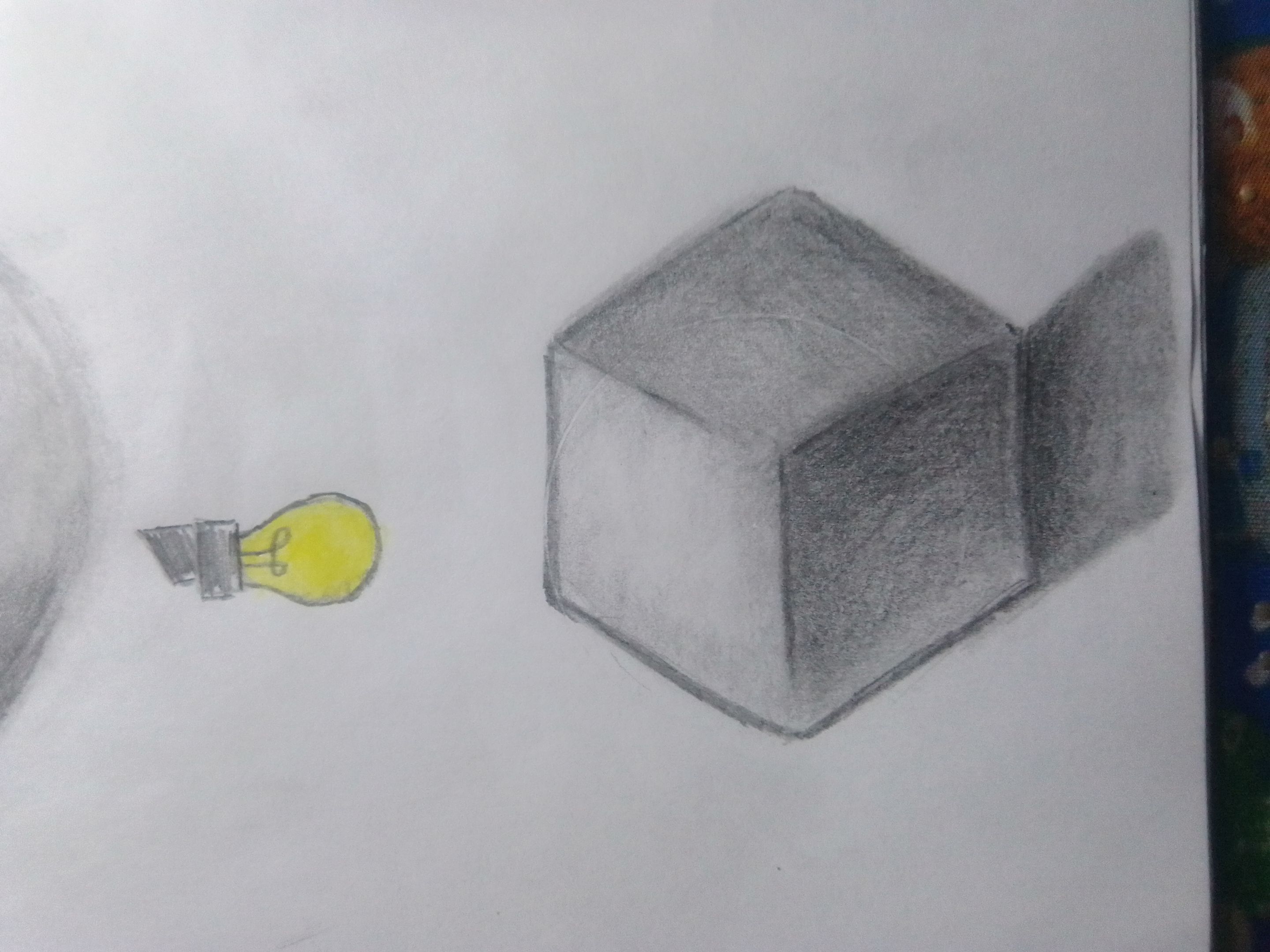
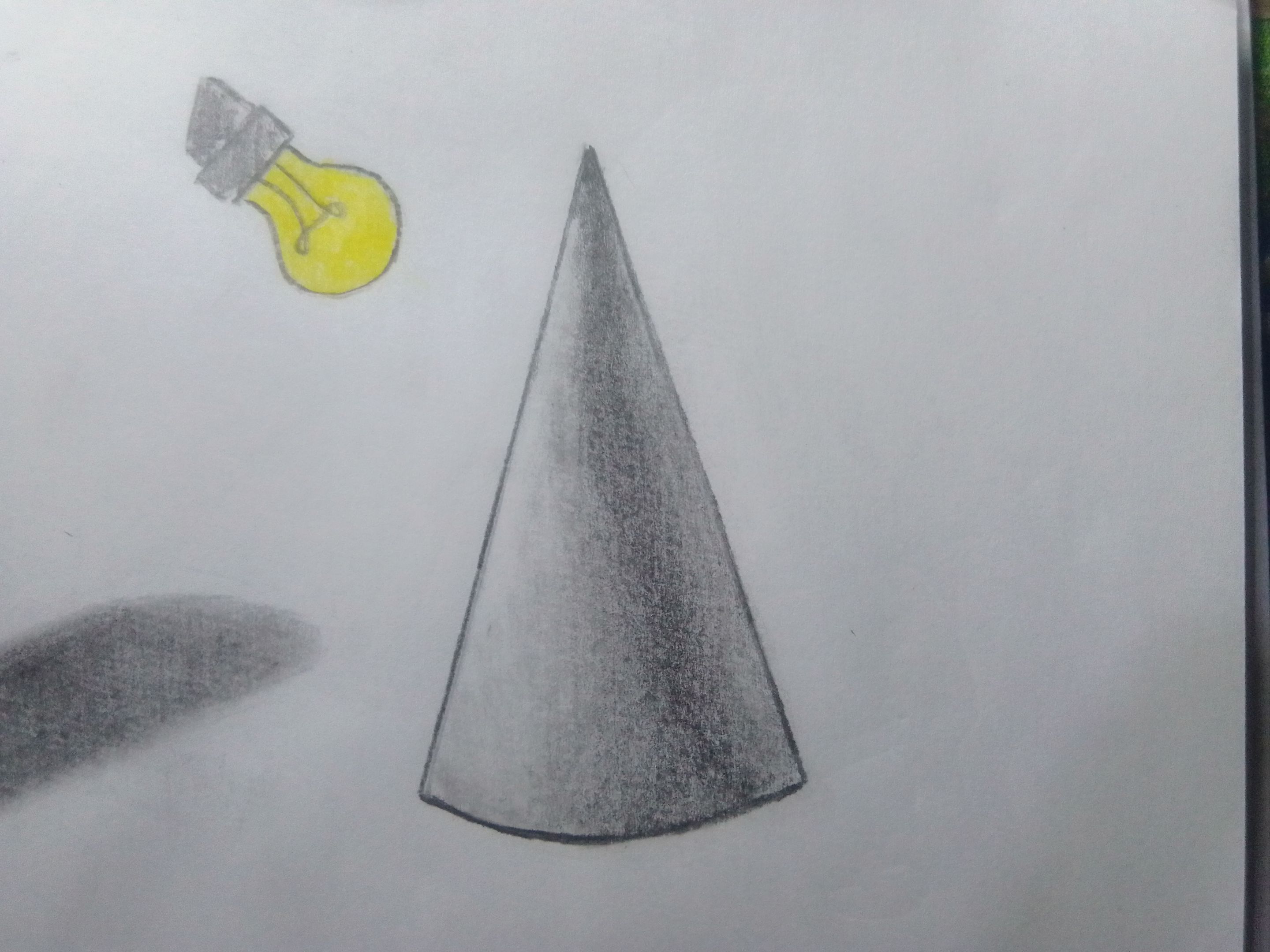
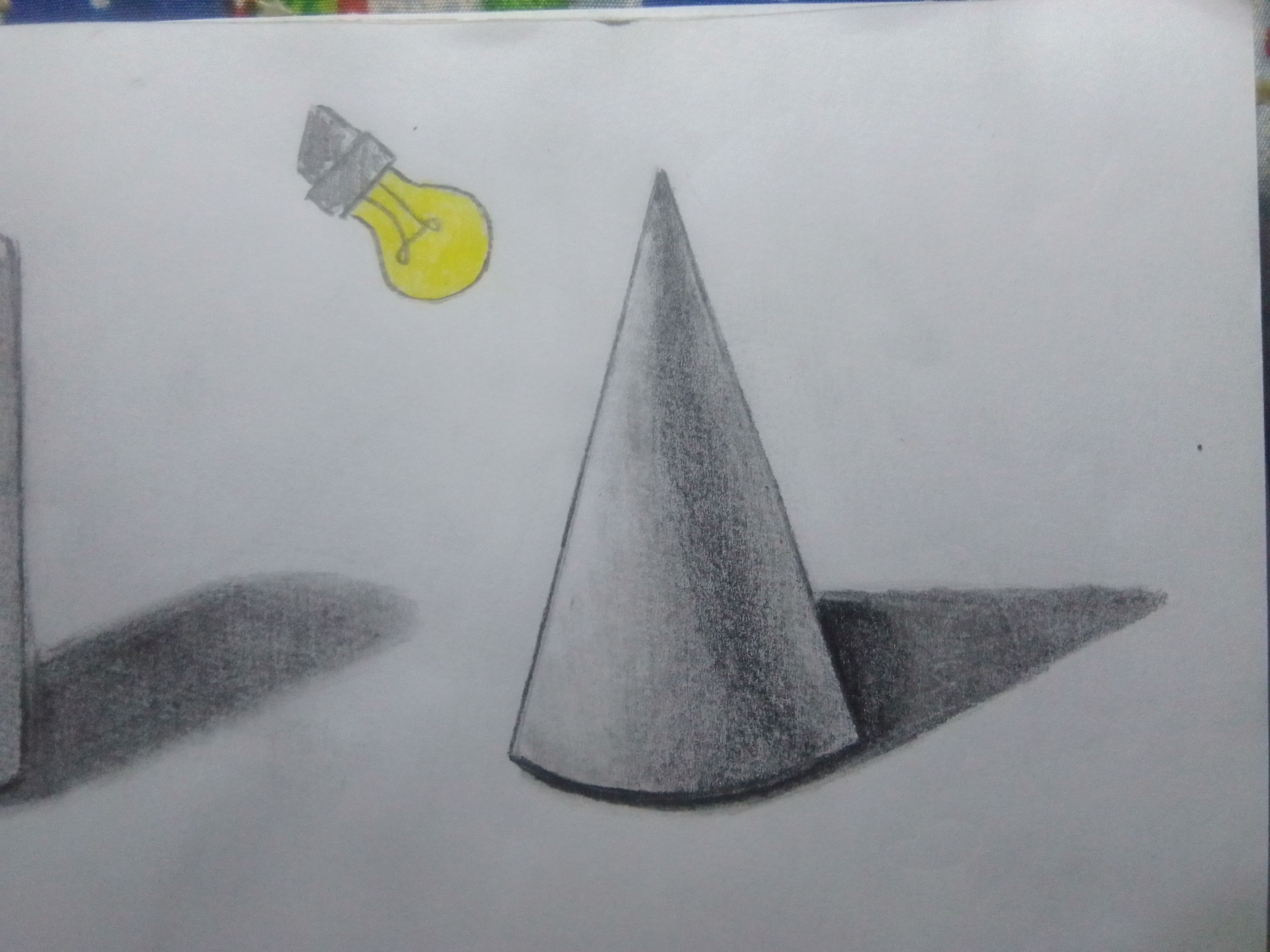
Para finalizar, vamos a poner todo esto en práctica y qué mejor que el clásico de dibujar objetos, que en este caso es un jarrón. El procedimiento es el mismo que todo lo dicho anteriormente para no repetir todo nuevamente y el resultado sería el siguiente.
Finally, let's put all this into practice and what better than the classic of drawing objects, which in this case is a vase. The procedure is the same as everything said above so as not to repeat everything again and the result would be as follows.

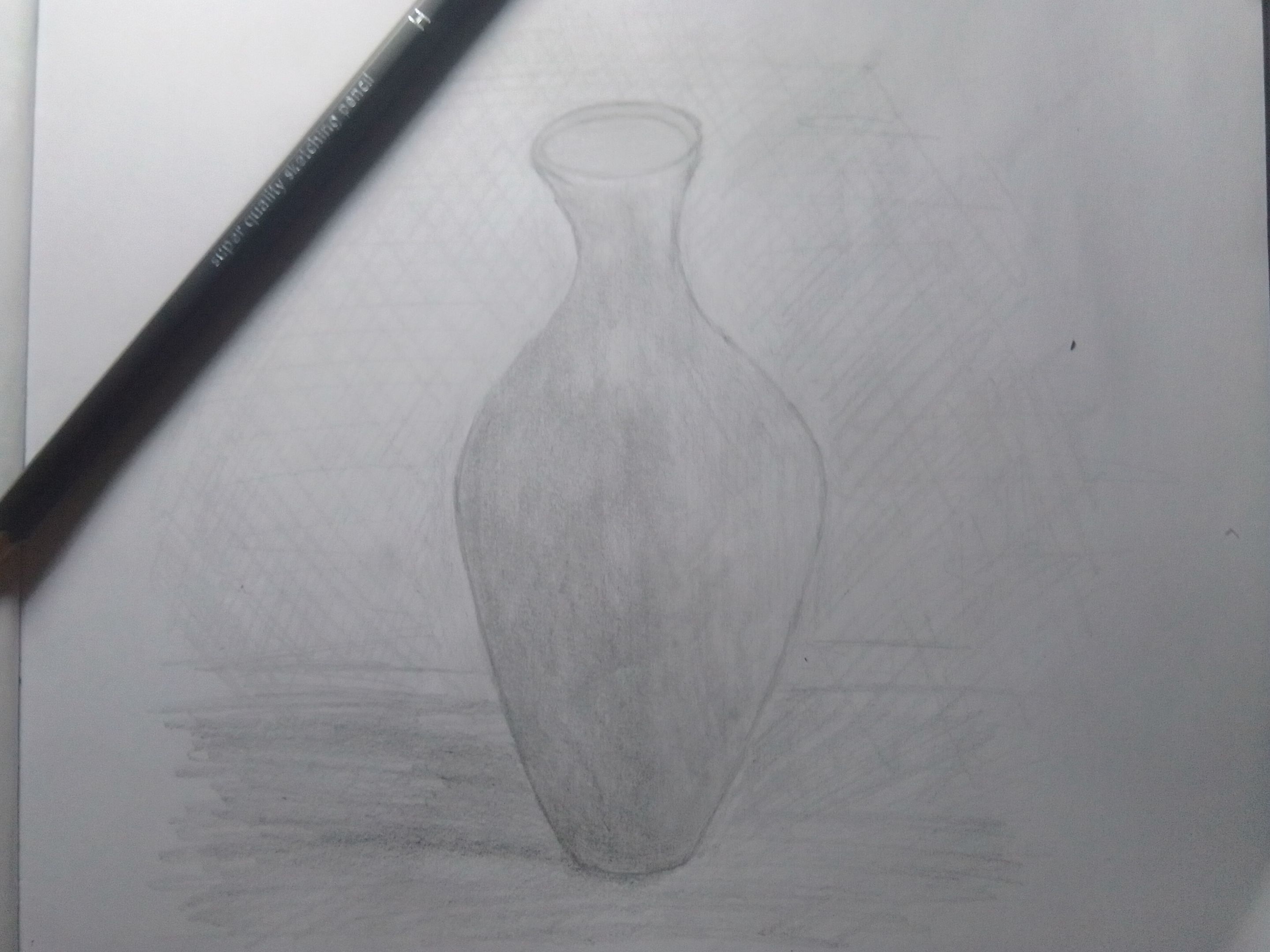
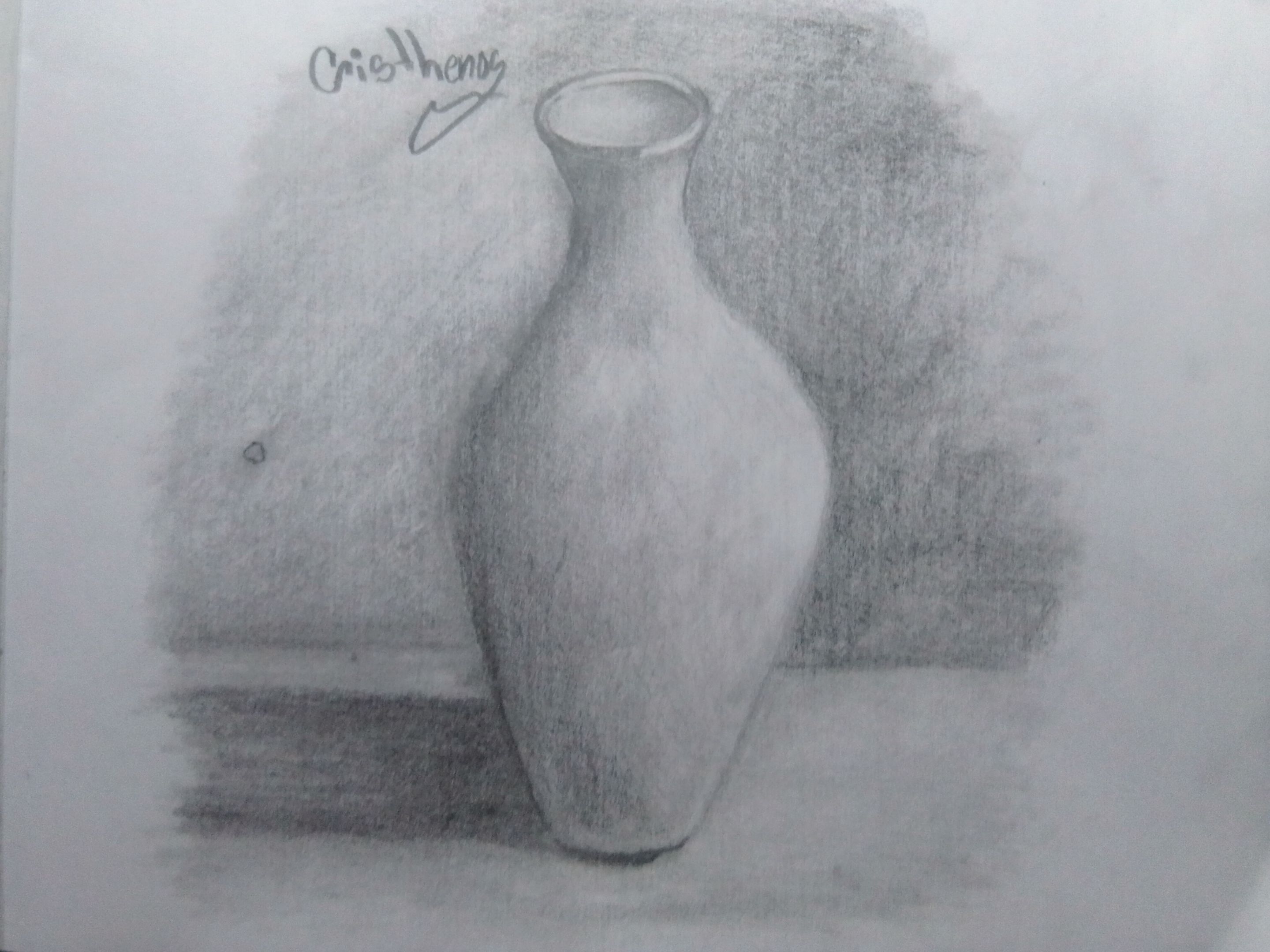
Bueno, esto fue todo por el día de hoy. Muchas gracias por haber llegado hasta aquí; espero les haya servido para ayudarlos o solucionar alguna duda. Sin más nada que decir, me despido hasta el siguiente post.
Well, that's all for today. Thank you very much for having come this far; I hope it has been useful to help you or to solve any doubt. With nothing more to say, I'll say goodbye until the next post.
|
Traducción
|
Translation
|
|-|-|
|
|
Muchas gracias por leer mi publicación!
|
Thank you very much for reading my post!
|-|-| |
Redes Sociales
|
Social Network
|
